NSF Awards Funding for the IceCube Upgrade
The IceCube Neutrino Observatory is about to get a significant upgrade. The World's largest neutrino telescope, located at the South Pole, is run by an international team of more than 300 scientists, including a group at the Niels Bohr Institute. With the approval of 23M USD by the US National Science Foundation, the IceCube Upgrade project with a total cost of 40M USD will be deployed in 2022/2023.
The IceCube Upgrade will add more than 700 new and enhanced optical sensors, densely packed in the deepest, most central region of the detector. These compliment the 5,160 sensors already embedded in the ice beneath the geographic South Pole. The ice in and around the detector is extremely transparent, which makes it an ideal medium in which to study the properties of relativistic particles.
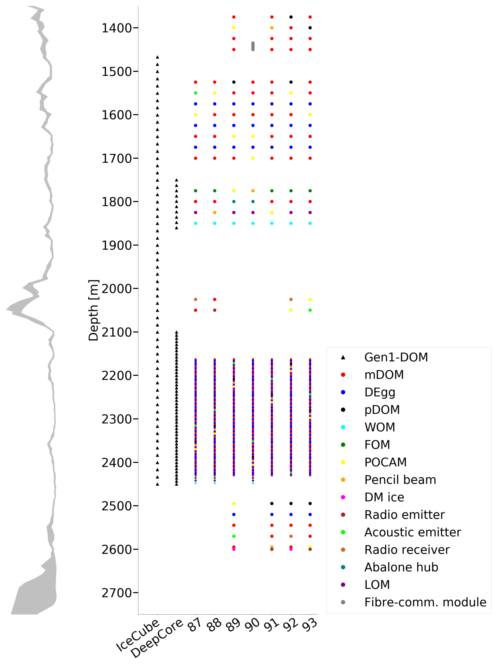
Neutrinos are sometimes called “ghost particles” for their ability to travel through matter and space over galactic distances without having any collisions. This ghostly behavior is due to their weak interaction with matter. Yet when neutrinos do interact with other particles in or near the detector, they create secondary particles, which cross the detector at such high speeds in the ice that they emit faint blue light—called Cherenkov light—that can be detected to identify the direction and energy of the parent neutrino. IceCube observes neutrinos both from the Earth’s atmosphere, and from distant astrophysical sources far beyond our own galaxy.
“The current IceCube detector is providing leading results in astrophysics and particle physics, specifically measurements of neutrino oscillations by researchers in Copenhagen, but can only take us so far. Through a truly international effort, this new detector is going to be a huge leap forward in our ability to understand the fundamental properties of the neutrino in ways that no other project in the world can do now”, says D. Jason Koskinen, Associate Professor and leader of the local IceCube research group at the NBI.
This upgrade will dramatically increase the precision with which IceCube scientists can measure the fundamental properties of neutrinos. Simultaneously, a suite of new devices will allow better understanding of the properties of the ice in the detector, allowing scientists to more accurately trace the paths of these neutrinos back through space to the violent astrophysical events that create them.
New Opportunities for Neutrino Oscillation
One of the strangest properties of neutrinos is their ability to change from one type (or ‘flavor’) to another, known as neutrino oscillation. The observation of these oscillations showed that neutrinos have mass, contrary to the prediction of the Standard Model (SM) of particle physics, and was awarded the Nobel Prize in physics in 2015.
Neutrinos are produced high in the Earth’s atmosphere due to the constant barrage of high energy cosmic rays from space. These neutrinos may oscillate as they travel across the Earth before reaching IceCube and being detected, allowing IceCube to study these oscillations by comparing the observed neutrino flavors to those originally produced in the atmosphere. The energies and travel distances of these neutrinos far exceed those at accelerator neutrino experiments.
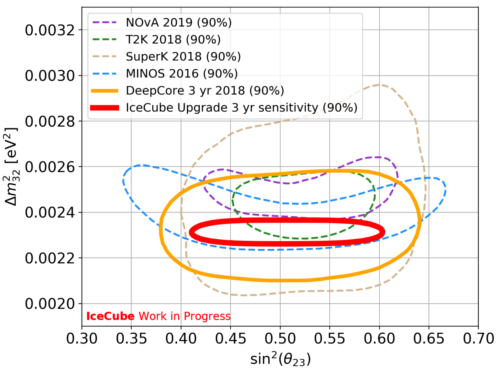
These studies can test if neutrinos are oscillating between only the three neutrino flavors currently known, or also between new types of neutrinos that have yet to be discovered. These new neutrinos have been predicted to explain how neutrinos acquire their unimaginably tiny masses.
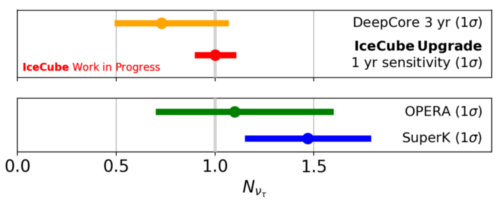
“The IceCube Upgrade’s unparalleled ability to simultaneously observe all three known neutrino flavors will be crucial in the search for new neutrino types, as well as other possible deviations from our current picture of neutrino oscillations predicted by theorists to explain gaps in our understanding of Nature” says Tom Stuttard, a postdoctoral researcher at NBI leading the IceCube Upgrade simulation development, and co-coordinator of the IceCube neutrino oscillation program.
Enhancing Neutrino Astronomy
A very high energy neutrino that was detected by IceCube in September 2017 was critical for pointing to the first source of cosmic neutrinos—those created in accelerators like massive black holes in distant galaxies. With the new strings, scientists will be able to better estimate the direction that very high energy neutrinos come from, thus providing a clearer view of the extreme universe and most likely allowing the identification of new astrophysical sources.
“The IceCube Upgrade comes at a crucial time for the project as we look towards an exciting future of advancements in the field that the IceCube detector will provide,” says Darren Grant, current spokesperson for the IceCube Collaboration and a professor of physics at Michigan State University.
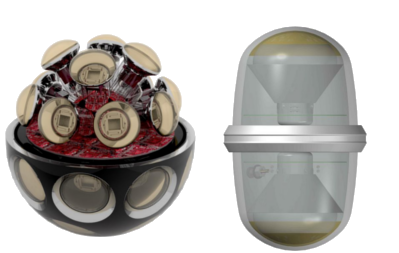
The planned IceCube Upgrade will have two different types of new sensor modules, which will be tested for a ten-times-larger future extension of IceCube known as 'IceCube-Gen2'. The modules to be deployed in this first extension will be two to three times more sensitive than the sensors that make up the current detector. This is an important benefit for neutrino studies, but it becomes even more relevant for planning the larger IceCube-Gen2.
In 2013, IceCube achieved a significant breakthrough by the discovery of a flux of high-energy neutrinos from the Universe. The origin of this emission is unknown and one of the scientific motivations for a next-generation telescope. "A future IceCube-Gen2 detector with five times improved sensitivity will be needed to unravel the population of neutrino sources consistent with the flux discovered by IceCube," says Markus Ahlers, Assistant Professor at NBI and coordinator of IceCube's neutrino source studies.
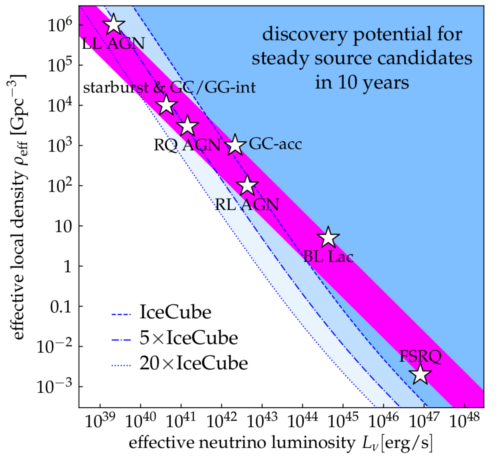
Topics
Related News
Research topics
Neutrino oscillations
The DeepCore array inside IceCube has a low-energy threshold that allows us to study neutrino oscillation properties.
Neutrino Astronomy
This area of research includes searches for neutrino sources, and progenitors of ultra-high-energy cosmic rays (UHECR).
Dark Matter (DM) Searches
Many theories describing DM candidates predict that they can annihilate into detectable neutrinos.
The IceCube Upgrade
Work is underway to develop the software and analysis tools needed for a new extension of IceCube, to be deployed in 2022/2023.
Discover The Detector
Learn more about how neutrinos are detected in IceCube.
